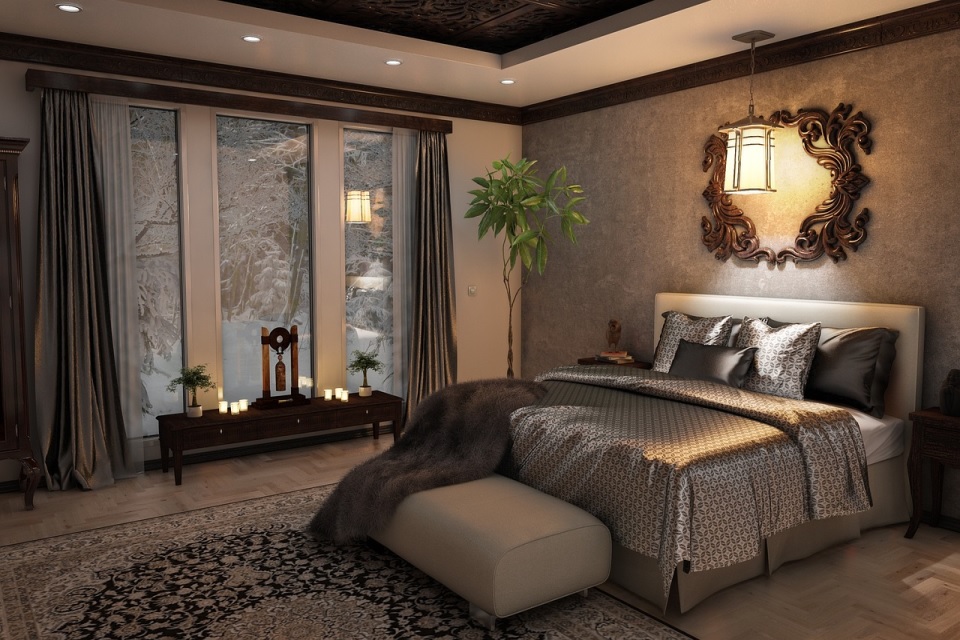Just as fashion trends change throughout the decades, bedroom furniture in Sydney and home living areas have also evolved. Throughout the years, we’ve seen trends come and go and witnessed how they’ve impacted bedroom and living styles.
Initially, bedrooms and bedroom furniture were treated as a space for sleeping. There was a communal sense that everyone shared a bedroom. As time has evolved, we’ve seen a huge shift in the need for privacy, and as a result, we’ve expanded our living areas. These shifts have come in over decades and brought us to the point of creating a sleep haven. Today, we’re taking a deep dive into how living and bedroom styles have evolved over time.
Living and Bedroom Furniture Over the Years in Sydney
1950s
The 1950s were where interior design began. After World War II ended, everyone slowly shifted out of small apartments and began to settle down in suburbia. This shift was a huge change, and because of its enormous impact, it’s now referred to as ‘mid-century modern’. The mid-century design uses clean lines and open spaces. This style was reflected in simplistic furniture in the bedroom and living room.
Along with the significant change, people took inspiration from nature and used this as a consistent theme throughout the home, introducing indoor and outdoor living. With houses getting larger over the decade, there was an increase in patio dining tables in Sydney and outdoor entertaining.
1960s
Moving into the 60s, this era was full of function. It was considered normal for married couples to sleep in two single beds next to each other. This fad was considered routine from the 40s and 50s, and stayed all through the 60s before gradually fading away in the 70s. Elements were brightly coloured but were done so with purpose. We saw pieces like the egg chair and bubble chair come into play, which current styles such as modern organic have taken inspiration from. The 60s were retro-modern with their bedroom furniture and often used floral patterns.
1970s
The 70s were a key pivotal moment for interior design. We saw the introduction of wood and wicker. Wood was used throughout the entire home, with everything from bed frames to cupboards and cabinets being made entirely out of wood. The colours were rich, and we also started to see a lot more organic shapes in the furniture. In the 70s, there was also the introduction of the waterbed. Unlike regular bedroom furniture in Sydney, the waterbed didn’t hang around for too long and made its way out after the 1990s.
1980s
The era pushed boundaries by using bright neon colours, built-in shelving units, and oversized and chunky couches, unlike the leather lounges we have today. It was a decade that embraced and encouraged bold colours and patterns. We’ve seen these trends trickle down into what we buy today. The 80s was also the era in which we saw an introduction of open living being embraced in kitchen and living areas.
1990s
The 90s was the era of canopy beds. These were usually extravagant and took up a large portion of the bedroom. With these larger beds, there was an increased demand for bunk beds in children’s rooms. We also saw the comeback of wood cabinets, which flowed throughout the home from the kitchen right through to the bedroom. The 2000s was the introduction of thrifting, more commonly known as the shabby-chic era. We saw items being repurposed and reused rather than people buying mass-produced furniture.
Stereos were a huge highlight of the 90s, with people making them a centrepiece or focal point in either the bedroom or living room. This was usually accompanied by wood or pine cabinetry, influencing the 2000s.
2000s
In the 2000s, we saw a shift away from wooden cabinets, which transformed into an ‘all white’ kitchen. We also saw the introduction of a full entertainment unit in the living room, which was usually a two to three-piece set. Entertainment began to creep into our lives even further, and some homes included a home cinema. Steering away from the 80s and 90s chunky couches, we saw the rise of leather lounges that focused on clean lines.
2010s
Coming into the 2010s, we’ve seen a massive increase in the trend of modern farmhouses, giving a twist to rustic chic. We also saw an increase in focus with Scandinavian design. The combination of these two paired together gave us a modern farmhouse style that used barn doors, white, reclaimed wood and black accents.
Now
Fast forward to now, we have seen the influence of all eras on bedroom furniture. In addition to the different eras, the pandemic has greatly impacted how we use our bedrooms and living rooms today. Homes and furniture now have taken on the role and need for being multifunctional. With a huge portion of us working from home, it’s normal for most homes to have a working area in the living room or a dedicated workspace.
Final Thoughts
No matter the era of design that is your preferred, the team at Brescia Furniture can help you find bedroom and living furniture to create your perfect home. One of the best things about the different eras is to see this reflected in a range of furniture. The team at Brescia can help you pick and choose pieces, such as leather lounges or dining tables in Sydney, to create a cohesive space.
If you’re interested in what we can do for you, get in touch with us. However, if you need some inspiration for what we offer, such as dining tables in Sydney or bedroom furniture, read through our latest blogs and follow us on social media.
Read Also:
The Ultimate Sleep Haven: Top Bedroom Furniture Essentials
Fabric VS Leather Lounges

